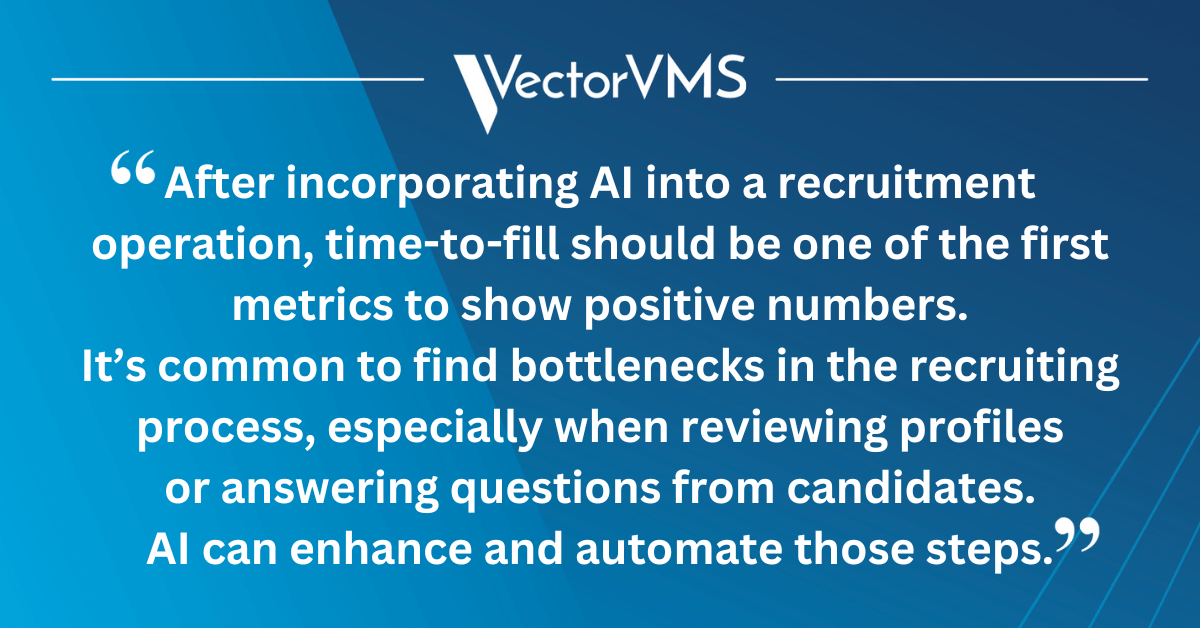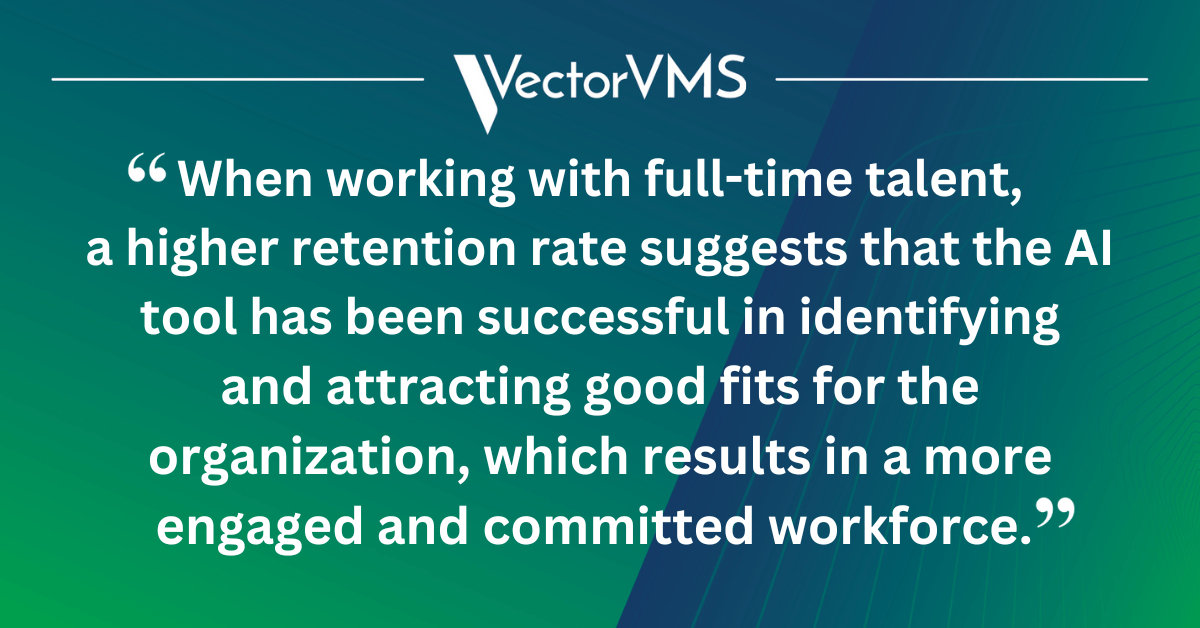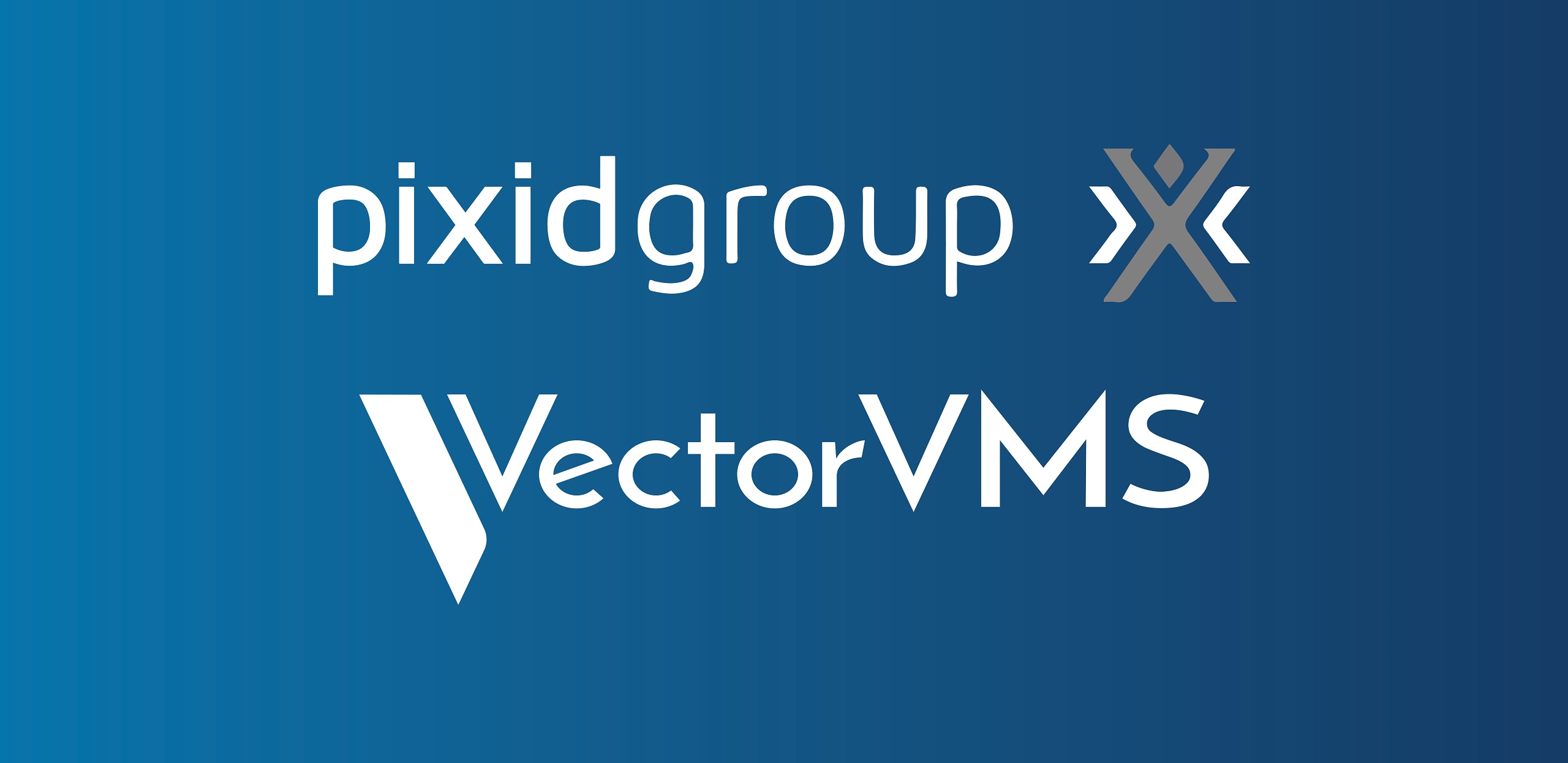Everyone involved in talent acquisition is talking about the wonders of implementing artificial intelligence (AI) in the recruitment process to automate daunting and time-consuming tasks. While it’s true that incorporating AI into a vendor management system (VMS) can take your contingent labor program to a new level of efficiency, how can you really assess whether it’s giving you good results?
Certainly, the arrival of AI promises to disrupt recruitment as we know it. Although it might look attractive to jump into the technology right away, it’s wise to do so strategically by first establishing what you are looking to improve with AI tools and how you will measure success.
There are a variety of different candidate engagement metrics that will help you determine if your program is operating successfully—some relate to the hiring process itself, and others relate more to the candidate experience. In this article, we highlight three signs that demonstrate your AI technology is steering your program in the right direction.
1) Reduced Time-to-Fill
Time-to-fill is one of the key candidate engagement metrics to look at when making any changes to your recruitment program. This metric refers to the number of days it takes to hire or engage a candidate after a job requisition has been approved. It measures the efficiency of your recruiting cycle, whether that’s managed by a third party or in an internal process.
After incorporating AI into a recruitment operation, time-to-fill should be one of the first metrics to show positive numbers. It’s common to find bottlenecks in the recruiting process, especially when reviewing profiles or answering questions from candidates. AI can enhance and automate those steps by:
- Resume screening: AI can quickly review resumes to identify candidates that meet the criteria for a role.
- Candidate sourcing: AI can identify potential candidates faster from a large pool of talent using various data points.
- Chatbots: Companies can leverage AI-powered chatbots to engage with candidates and answer their questions throughout the application process.
YOU MIGHT ALSO BE INTERESTED IN READING | ‘AI in Recruiting: Finding the Right Balance Between Automation and Human Interaction’

2) Improved Candidate Experience
Candidate input about every aspect of your experience from hiring through to offboarding can give you great insight into the performance of your program.
AI can help to improve the candidate experience by providing personalized communication and timely feedback. For example, as previously mentioned, companies can use AI-powered chatbots to provide 24/7 and customized communication with candidates throughout the recruitment process.
By tracking candidate feedback and satisfaction, an organization can determine if the AI-powered tool is truly helping to deliver a good candidate experience. Data on how candidates feel about the application step, their communication with recruiters, the clarity of requirements, or overall satisfaction with the process will help you review the performance of your technology.
3) Higher Retention Rates
There’s no denying that AI can take a lot of the human workload away from your recruiting team. However, how can you make sure it’s selecting the right candidates? One metric to prove that is retention rate.
Retention rates represent the percentage of employees who remain in a company for a certain period of time after being hired. When working with full-time talent, a higher retention rate suggests that the AI tool has been successful in identifying and attracting good fits for the organization, which results in a more engaged and committed workforce. This, in turn, can lead to better performance and productivity, as well as reduced turnover costs.
When it comes to contingent labor, the retention rate becomes more complex since individuals are hired on a temporary or contract basis and by definition not “retained”. Instead, contingent workers that successfully finish their assignments or request to extend their engagement with the organization are clearly indicating that they’re satisfied with their experience and that the company is doing something right.
LEARN MORE ABOUT AI AND RECRUITING | ‘The Power of AI and How It Can Transform Your Talent Acquisition Strategy’

Establishing Goals and Objectives
Data means nothing without clear goals and objectives. To measure the success of your AI-powered recruitment strategy, you need to set KPIs. By defining how long you want your recruitment process to be or the percentage of project completions ahead of time, you’ll have a better understanding of which portions of your talent engagement strategy need tweaking or adjusting to achieve greater success.
VectorVMS recognizes the importance of AI and has been at the forefront of using AI to improve talent acquisition. Our VMS integrates with Leoforce’s Arya, an AI solution that will elevate your organization’s recruiting experience and really drive time and cost savings for your strategy. Furthermore, it ensures the process is measurable, allowing you to easily gauge its success.
Want to witness the power of AI and VectorVMS? Talk to us to learn more about our solution, or go ahead and schedule a demo—we’re eager to show you what our technology can do for your organization!
 Meet the Expert
Meet the Expert
Taylor Ramchandani – VP of Strategy
Taylor Ramchandani is responsible for the management and strategic planning of the VectorVMS vendor management system. Taylor is committed to client satisfaction and to ensuring VectorVMS technology meets the current and future needs of clients and managed service providers (MSPs). She uses market research and in-depth industry experience to create products and services that make extended workforce management efficient and intuitive. Taylor oversees product development, marketing, and business partnerships for VectorVMS and is responsible for driving innovation for contingent workforce management. Connect with her on LinkedIn.



